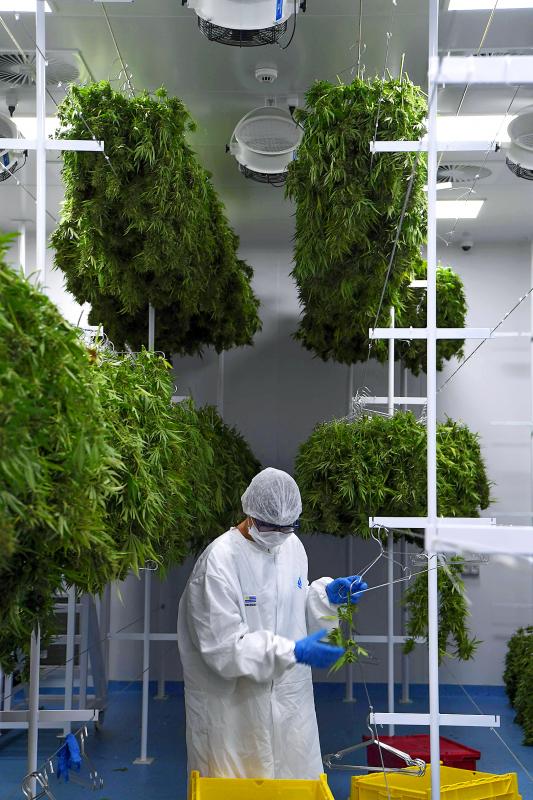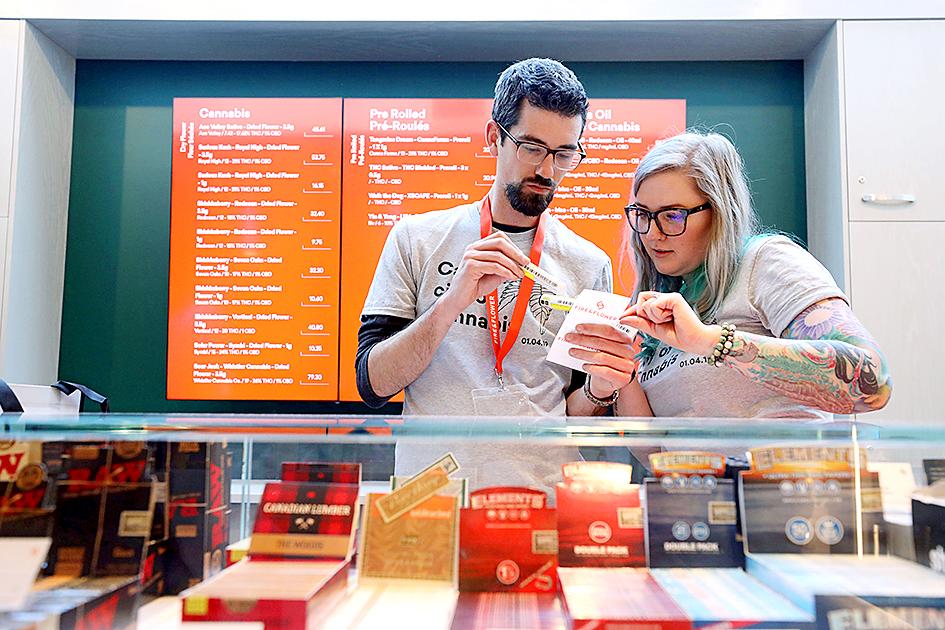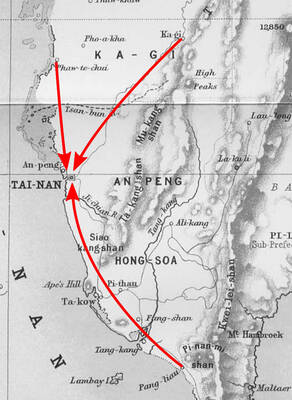The lights shone more brightly than anything I’d ever seen. One million blinding watts strafed across the leaves of countless cannabis plants that peeled off in neat rows in every direction. The warehouse was as pristine as a pharmaceutical facility, and as we strode around in crisp white nylon overalls and box-fresh wellies, the atmosphere was surreal — interstellar, almost. It felt as if we were on a mission to Mars. It was definitely a glimpse of the future.
It was 2017 and I had been invited to visit this legal medical cannabis “grow” in the town of Gatineau, near Ottawa. I was in Canada after writing a paper for the drug-law reform think tank Volteface , proposing an online-only, legal cannabis market in the UK as a way to break the logjam between the UK’s two million cannabis smokers and those who fear legalization. I was meeting with Canadian police and politicians to hear more about that country’s plans to completely legalize cannabis the following year.
Back in the UK, a million-watt grow like Gatineau’s would put you in jail for a decade. Here, it was likely to make its owners a very cool, very legal few million in mere months. Added to that, the state would benefit, too, as taxes from sales of the crop would be collected for the common good rather than enriching criminals. It felt utopian.

Photo: AFP
For the three decades I have campaigned to reform drug laws, I never expected to see change happen so quickly, or at such scale, as it did in Canada. But, two years on, the Canadian experiment hasn’t quite turned out as we reformers had hoped.
The Gatineau greenhouse through which I strode on that day in 2017 was owned by a firm called the Hydropothecary. Now named Hexo, in October last year it shed 200 of its 800 staff. On March 4 one of Canada’s biggest growers, Canopy Growth, announced the closure of two mega-greenhouses in the towns of Delta and Aldegrove — with 500 job losses. The firm also canceled the opening of a new site in Niagara-on-the-Lake, Ontario.
HIGHS AND LOWS OF LEGALIZATION

Photo: Reuters
Meanwhile, the black market is still vibrant while cannabis stocks have crashed, medical patients say they can’t get hold of essential medicines, and thousands of jobs have been lost. So what went wrong — and what went right? Were cannabis activists’ hopes of a regulated cannabis market just a pipe dream?
Canada had permitted cannabis for medical use since 2001. Medical patients were allowed to grow four plants, and licensed producers cultivated larger crops for sale online to those with valid prescriptions. But most Canadian cities had illegal — but tolerated — dispensaries where the drug was sold completely indiscriminately.
These stores made Amsterdam’s coffee shops look as prim as a cake stand. The quality and variety of cannabis on sale at these illegal outlets was outstanding, bewildering. Business was not just booming, but blazing. And it was all completely illegal.
Canada’s Cannabis Act of 2018 was a bold attempt to impose some order on this anarchic retail scene. It legalized the sale to adults of 30g of cannabis in austere packaging from government-licensed shops. Canadian prime minister Justin Trudeau said: “The old approach to cannabis didn’t work. It was too easy for our kids to get it and gangs and drug dealers were reaping the profits. That changes from now on.”
Bill Blair, a former Toronto police chief, became an unlikely cheerleader for legalization, arguing that to do so would “keep cannabis out of the hands of youth, and profits out of the hands of criminals.”
Two other key goals of regulation were the protection of public health and the reduction in criminality associated with the illegal market. After 50 years of the unending, senseless drug war, peace had broken out.
Or so it seemed. Because while Canada may have lit the fuse on an ambitious experiment, every high has a low. Within a year the industry was experiencing mass layoffs, multi-billion-dollar stock-market losses, executive firings and corporate scandals as the overhyped new sector experienced a dramatic and humbling public correction.
What went wrong? Alastair Moore, co-founder of Hanway Associates, a London-based cannabis consultancy, says the Canadian industry has been driven by vulture capitalism and wishful thinking.
“A mix of greed and naivety led this industry to great heights — and has left it on its knees,” Moore says. “While some made lots of money, others lost their investments and now many others have lost their jobs.”
According to Moore’s fellow founder, George McBride: “The key thing is that Canada did actually get the reforms through. In and of itself, that is a huge feat. It’s the first time any major developed country has done so. And so, kudos. However, getting it through has involved a lot of politicians who didn’t understand what they’re talking about designing a really complicated system.”
REGULATING INTOXICATION
So just how does a state create and regulate an entirely new business of intoxication that has always existed, essentially, in a countercultural, outlaw space? Canada, it turns out, did so cautiously, with every decision deliberated over by a centralized government task force .
Added to the complexity of the policy and its implementation, the needle of international capital’s wonky moral compass swung straight at these lucrative new markets. Hundreds of millions of dollars were raised on global capital markets and the Canadian landscape was quickly dotted with massive new grow sites.
The “green rush” had started and production went into overdrive. Stock prices soared and fortunes were staked, made, doubled and tripled in an atmosphere reminiscent of the 90s dotcom boom, or the Yukon gold rush of the 19th century, when 100,000 prospectors headed into the Canadian hinterlands in search of riches. Many firms hoped to corner the Canadian market by throwing millions of dollars of shareholders’ money into massive grow sites. This time, the gold was green. But soon, things started to fall apart.
The main problem Canada’s smokers and growers faced was access: too few retail shops were able to open to serve the eager new market. Canada is a country of 38 million people, divided into 10 provinces that are similar to US states, with provincial governments producing a patchwork of varying regulations. Over a third — 13.5 million — of all Canadians live in the state of Ontario. But as of March 2, Ontario had just 41 retail cannabis stores. The province of Alberta, home to 4.4 million, has 423 stores.
And where there was product available, the price was almost double that of the illegal market. C$5.59 to C$10.23 per gram (US$4 to US$7.25). That was caused by tax burdens and overheads: the legal market has to comply with regulations on fungicide and pesticide residue levels, and draconian security requirements for grow sites, such as huge vaults in which to store the cannabis and record-keeping for every person who enters these vaults.
The illegal market, meanwhile, is completely unregulated — and thriving because of this. Statistics Canada , a state agency, reports that just 29 percent of cannabis users buy all of their product from a legal source. Four in 10 Canadians told the organization that they bought at least some cannabis from illegal sources last year.
‘BAD WEED’
The next problem was that many stores sold poor-quality grass, with smokers complaining that it had been poorly dried and cured, and tasted bad. Modern cannabis users are accustomed to a range of flavors, from lemon to mango, pineapple, strawberry and pine. These flavors are derived from the plant’s natural aroma profile, which skilled growers preserve by careful breeding, correct harvesting and slow, cautious curing of the fragrant flowers.
Many players in the new mass market often skipped these steps in the pursuit of profit, says David Brown, a British Columbia-based cannabis industry analyst.
“Many consumers have had complaints about high prices and what is perceived as lower quality, especially the tendency of many of the legal dried flower products to be overly dried, often from a rushed or improper curing and drying process.”
Why would anyone drive a few miles up the road to score bad weed from many of the government shops when your regular black-market dealer lives nearby, has better product and brings it to your door for half the price?
It’s worth reflecting, also, on the psychology of some of these users.
“For a long time, cannabis has been the mark of the rebel, the outsider, the outlaw,” Brown says. “A lot of the people who complain about ‘bad weed’ and so-called ‘fake legalization’ are doing so because parts of their countercultural identity have been altered forever by this law change. Canada has made cannabis boring — and that was kind of the point.”
With few shops to sell to and customers clinging to their traditional dealers, the new cannabis corporations found themselves holding a glut of product. There is a stockpile of grass weighing in at 400 tonnes, at last count, according to official government inventory figures.
The rollout of retail shops was left, in many cases, to inexperienced officials in provincial government departments, says McBride.
“Ontario authorities said, ‘We don’t trust private organizations to run cannabis shops. We’re going to do it all ourselves.’ Then they tried to do it, but they squandered about $80 million trying to figure out how to do it, and got absolutely nowhere. They had to cancel it and invite private tenders. All these big, shiny grow facilities that cost C$10 million, C$20 million or C$30 million to build, and which all grew loads of cannabis — there was nowhere to sell it, because there weren’t any shops,” he says.
In a stinging irony, medical patients — the very people whose decades of activism had driven the wider reforms, faced cannabis shortages and a steep increase in price after legalization as suppliers diverted their medical product in bulk to the new recreational market rather than in hundreds of smaller deals to medical patients.
Dan Sutton of Tantalus Labs, a British Columbia-based grower that uses natural sunlight and greenhouses, says legalization has been “largely negative” for medical cannabis users because of this new sales dynamic.
“Physicians have been telling medical users they should buy from the recreational marketplace, which is completely inappropriate — and it loads them up with extra taxes and tariffs.”
Sutton originally built his low-impact, sunlit grow to service medical users, and still focuses on this original customer base. But they make up just 10 percent of his sales.
“Many licensed producers now don’t,” he says. “Some have just pulled their financial resources on their medical platforms. If a medical user can’t get their medicine — for people, with, say, multiple sclerosis - that can lead to severe impairment, traffic accidents and potentially death. That blood is on those licensed producers’ hands that stopped serving those users’ needs,” he says.
Paul North, director of communications at Volteface, which commissioned me to write the paper, says Canadian customers’ response to the malfunctioning new markets is understandable.
“You have to provide a superior experience to the illicit market. When it comes to cannabis, this is not easy. Dealers have no marketing restrictions, and can offer a sweet deal and deliver a product to your door.”
TANKING STOCKS
Hype talks, but money walks. The early euphoria in the cannabis stock market has been replaced by a major dose of paranoia. All cannabis stocks have tanked, with an average 50 percent wipeout in value right across Canada and the US in the last year. Major players such as Aurora Cannabis took the biggest hit, with its shares falling from US$12.83 in March last year to US$2 today. Another bud behemoth, Tilray, has also had its share price slashed by 80 percent, from over US$81 to US$16 within a year.
Other cannabis giants including Aphria lost 60 percent of their paper value last year, while Canopy Growth sank by 54 percent. Financing has dried up for the new industry, and small-scale retail investors — often young professionals investing via smartphone apps — have lost large sums of money. None of this is to assert that Canada’s policy has been a failure. If we compare it to the UK cannabis industry, where illegally trafficked children have been found enslaved in abandoned buildings growing cannabis for gangsters, it is better by several orders of magnitude.
Steve Rolles of UK-based drug law reform group Transform agrees that it is harsh to judge the project’s success so soon.
“We are still in the rollout phase. They are still in a transition from an illegal economy to a legally regulated one. It will take some time for new market equilibrium to be established, and for new social norms to emerge, and for teething problems to be addressed.”
How best to create a legal cannabis industry is a question with a particular urgency in the UK today as we build a market for medicinal use — albeit agonizingly slowly. I strongly believe that cannabis will be legalized for adult use in the UK within five years. And it all goes back to that Gatineau greenhouse I visited in 2017.
On that trip, I was accompanied by two Tory party insiders, Blair Gibbs, ex-adviser on police matters to Boris Johnson when he was mayor, and Danny Kruger, son of TV chef Prue Leith, who wrote the “hug a hoodie” speech for David Cameron. Both men experienced something of a
Damascene conversion in their views on cannabis law during that trip.
Days after his return, Kruger wrote in the Spectator: “We do not need to ban everything bad. After all, the Victorians never prohibited alcohol. They regulated it, taxed it and hedged it about with a culture of disapproval. Instead of the prohibition of cannabis we need an old Victorian virtue: temperance.”
Blair Gibbs moved to Canada in 2017 to work as a cannabis consultant, but in August last year he took a job in the PM’s office. Both men are now at the very heart of the British government: Kruger was last year parachuted into the safe Tory seat of Devizes to stand as MP in the last election and is also an adviser to Johnson.
Whether their weed-friendly outlook survives the cold glare of Whitehall orthodoxy remains to be seen. But it is undeniable that the economic libertarians of the Tory party right now are much more pro-cannabis than their newly nationalizing Labor party counterparts. There are, after all, many billions of pounds to be made by the kind of people who fund the Tories: land and property owners and the banks that will finance the new industry.
What happens if you just legalize this drug? It’s a question no one other than Canada has ever really asked. My view is that we have long known that all drug laws are unworkable, illogical, unjustifiable, unscientific, counterproductive and generate countless unintended consequences — in fact, drugs laws often create the exact opposite outcomes to those desired. But ironically, and with a beautifully stoned logic, it turns out that legalizing cannabis in Canada has generated just as many challenges as it solved.
What Canada’s experience demonstrates is that cannabis legalization does not instantly deliver some great social panacea. There is no promised land. But we should never lose sight of this essential truth: Canadians can no longer be jailed for growing and eating and smoking certain flowers. That is a huge, fundamental step forward, no matter what the stock market indices say.
Notwithstanding the market vagaries and the slow shrinking of the illegal market, analyst Andrew Brown is still proud of his country’s bold step into the unknown.
“Legalization in Canada is hardly perfect. After all, we’re less than two years into legalizing a product that has been illegal for nearly a century,” he says. “This is a process, not a destination, and the slow, deliberate approach to a well-regulated industry is allowing Canada to set a responsible path forward that other countries can feel safe in following, even refining and improving upon.”

The Taipei Times last week reported that the rising share of seniors in the population is reshaping the nation’s housing markets. According to data from the Ministry of the Interior, about 850,000 residences were occupied by elderly people in the first quarter, including 655,000 that housed only one resident. H&B Realty chief researcher Jessica Hsu (徐佳馨), quoted in the article, said that there is rising demand for elderly-friendly housing, including units with elevators, barrier-free layouts and proximity to healthcare services. Hsu and others cited in the article highlighted the changing family residential dynamics, as children no longer live with parents,

Oct 20 to Oct 26 After a day of fighting, the Japanese Army’s Second Division was resting when a curious delegation of two Scotsmen and 19 Taiwanese approached their camp. It was Oct. 20, 1895, and the troops had reached Taiye Village (太爺庄) in today’s Hunei District (湖內), Kaohsiung, just 10km away from their final target of Tainan. Led by Presbyterian missionaries Thomas Barclay and Duncan Ferguson, the group informed the Japanese that resistance leader Liu Yung-fu (劉永福) had fled to China the previous night, leaving his Black Flag Army fighters behind and the city in chaos. On behalf of the

I was 10 when I read an article in the local paper about the Air Guitar World Championships, which take place every year in my home town of Oulu, Finland. My parents had helped out at the very first contest back in 1996 — my mum gave out fliers, my dad sorted the music. Since then, national championships have been held all across the world, with the winners assembling in Oulu every summer. At the time, I asked my parents if I could compete. At first they were hesitant; the event was in a bar, and there would be a lot

The election of Cheng Li-wun (鄭麗文) as chair of the Chinese Nationalist Party (KMT) marked a triumphant return of pride in the “Chinese” in the party name. Cheng wants Taiwanese to be proud to call themselves Chinese again. The unambiguous winner was a return to the KMT ideology that formed in the early 2000s under then chairman Lien Chan (連戰) and president Ma Ying-jeou (馬英九) put into practice as far as he could, until ultimately thwarted by hundreds of thousands of protestors thronging the streets in what became known as the Sunflower movement in 2014. Cheng is an unambiguous Chinese ethnonationalist,